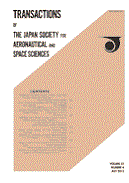Volume 44, Issue 144
Displaying 1-10 of 10 articles from this issue
- |<
- <
- 1
- >
- >|
-
2001 Volume 44 Issue 144 Pages 65-72
Published: 2001
Released on J-STAGE: July 09, 2005
Download PDF (432K) -
2001 Volume 44 Issue 144 Pages 73-81
Published: 2001
Released on J-STAGE: July 09, 2005
Download PDF (286K) -
2001 Volume 44 Issue 144 Pages 82-88
Published: 2001
Released on J-STAGE: July 09, 2005
Download PDF (162K) -
2001 Volume 44 Issue 144 Pages 89-95
Published: 2001
Released on J-STAGE: July 09, 2005
Download PDF (504K) -
2001 Volume 44 Issue 144 Pages 96-100
Published: 2001
Released on J-STAGE: July 09, 2005
Download PDF (82K) -
2001 Volume 44 Issue 144 Pages 101-105
Published: 2001
Released on J-STAGE: July 09, 2005
Download PDF (147K) -
2001 Volume 44 Issue 144 Pages 106-110
Published: 2001
Released on J-STAGE: July 09, 2005
Download PDF (152K) -
2001 Volume 44 Issue 144 Pages 111-118
Published: 2001
Released on J-STAGE: July 09, 2005
Download PDF (171K) -
2001 Volume 44 Issue 144 Pages 119-126
Published: 2001
Released on J-STAGE: July 09, 2005
Download PDF (259K)
TECHNICAL NOTE
-
2001 Volume 44 Issue 144 Pages 127-129
Published: 2001
Released on J-STAGE: July 09, 2005
Download PDF (96K)
- |<
- <
- 1
- >
- >|
